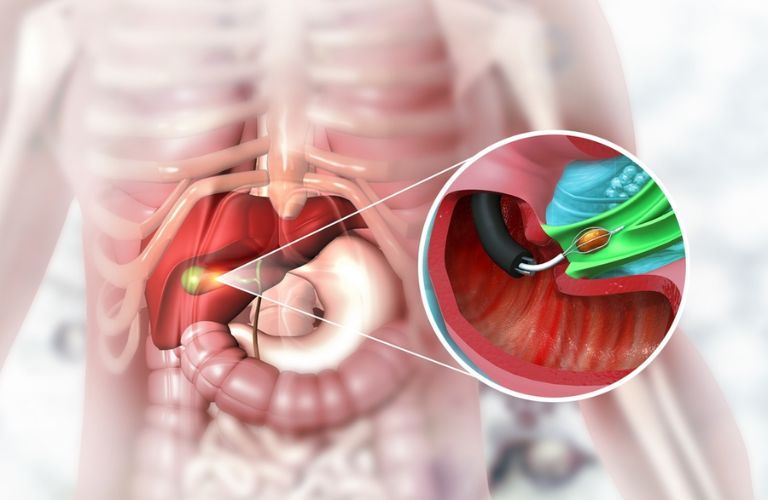Pain and discomfort are the first signs that something is wrong with your body. Minor pains and aches often go away on their own with some self-care and minimization of trigger activities. For example, if you exert your muscles either by pulling or lifting excess weight then your arm starts aching. Some cold compress, a little bit of rest and painkillers relieve you of the pain and discomfort.
But there are times when the pain escalates to unbearable levels and that’s when you rush to a doctor/hospital. Especially when it comes to abdominal pains and cramps. The sudden pain in the middle of your abdomen right under your ribs that lasts for 1 to 4 hours may indicate that you are suffering from gallstones. According to Dr Dhaval Mangukiya, a gastro surgeon in Surat, gallstones can also increase the risk of severe life-threatening complications such as bile duct inflammation and infection, pancreatitis or cholecystitis. It may even lead to gallbladder cancer.
What are gallstones?
Gallstones are hardened stone-like deposits that are formed in the gallbladder. The gallbladder is a small pear-shaped organ of the digestive system just under the liver. It is responsible for storing and releasing a digestive juice called bile. Bile helps in breaking down fats into fatty acids and is produced by the liver.
When this stored bile in the gallbladder hardens into stone-like deposits, they are known as gallstones. Bile that contains an excess of bilirubin or cholesterol or not enough bile salts turn into gallstones. Gallstones are very common. They are often prevalent in people aged 60 or more.
Sometimes, gallstones do not cause any symptoms (these are called silent gallstones) and need no treatment. It is only when gallstones block the bile ducts that they cause severe pain in the stomach, also known as a gallbladder attack, and need to be treated. Gallstones can be as tiny as a grain of sand or as big as a lemon.
Dr. Dhaval Mangukiya is a renowned gallstone surgeon in Surat and has performed many gallstone surgeries in Surat.
Symptoms of gallstones:
Silent gallstones do not cause any symptoms. Gallstones that block the bile ducts cause the following symptoms:
- Sudden and severe pain in the right side of the abdomen just under the ribs. The pain usually erupts after a heavy meal, especially in the evening or night
- Nausea and vomiting
- Fever (mild or high) with or without chills
- Yellowing of the skin or in the whites of the eyes
- Dark urine and light-coloured stools
- Pain in the right shoulder
- Back pain between the shoulder blades
Gallbladder attacks should not be ignored; Immediate medical treatment is a must to avoid life-threatening complications.
Causes of gallstones:
Doctors are not sure as to what exactly causes gallstones. But the common denominators among people who have had gallstones are:
Excess cholesterol in bile: Bile is responsible for dissolving the cholesterol excreted by the liver. If the liver starts excreting more cholesterol than the bile can dissolve, the excess cholesterol gets converted into hardened gallstones and are called cholesterol gallstones.
Less bile salts in bile: Bile salts deficiency can obstruct bile ducts.
When the gallbladder doesn’t empty completely: A healthy gallbladder moves the bile into the small intestine to digest fats through contractions. If the gallbladder doesn’t contract enough, some bile is left behind. This left-over bile concentrates to form crystals.
How painful is gallstone surgery?
Pain in gallstone surgery depends on the preferred type of gallstone surgery. If the gallstones are removed during open surgery, the pain and discomfort are a bit more than when the gallstones are removed laparoscopically.
However, in general, gallstone removal surgeries are typically less painful.
At what size is gallstone surgery needed?
If the gallstones aren’t causing any symptoms there’s no need for surgery. Surgery is needed only when the gallstones either move into the bile duct or cause bile duct blockage. Regardless of the size of the gallstone, this condition needs immediate medical attention and must not be ignored. There are many gastrointestinal surgeons in Surat that can help you in treating gallstones. Dr. Dhaval Mangukiya is one such leading gastrointestinal surgeon in Surat.
What is the recovery time for gallstone surgery?
The recovery time for gallstone surgery depends on whether it is an open surgery or if the gallstones are removed laparoscopically.
If the gallstone is removed through open surgery, you will need to have a longer hospital stay. It will take around 6 to 8 weeks for you to fully recover from gallbladder surgery.
If the gallstone is removed laparoscopically, also known as minimally invasive surgery or keyhole surgery, the pain and recovery time is much less – around 2 to 3 weeks.
Can gallstone surgery be performed laparoscopically?
Gallbladder stones can be removed in two ways:
- Open surgery: In open surgery, the surgeon makes an incision (cut) of about 5 to 7 inches on your abdomen to remove the gallbladder. Since the recovery time for open surgeries is more, it is preferred only if you have uncontrolled bleeding, you are obese or if you are in the last trimester of your pregnancy.
- Laparoscopically: Gallbladder stones can be removed laparoscopically by making four small incisions on your abdomen through which a laparoscope is inserted into the belly and the diseased organ is taken out. This procedure is known as Laparoscopic Cholecystectomy.

